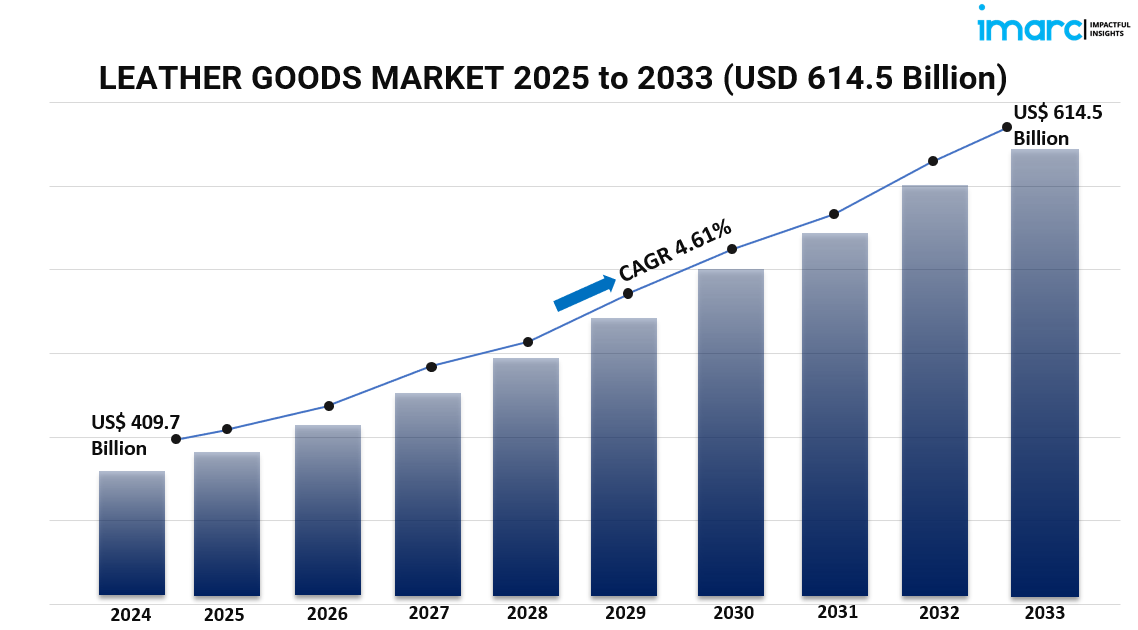
Market Overview
The global leather goods market is poised for strong growth, reaching USD 409.7 billion in 2024 and projected to climb to USD 614.5 billion by 2033, with a CAGR of 4.61% during 2025-2033. This expansion is driven by increasing consumer demand for premium and luxury products, higher disposable incomes, innovations in leather processing technologies, and evolving fashion trends. Additionally, a growing emphasis on sustainable and eco-friendly production, combined with the expansion of e-commerce and global trade networks, is boosting the market outlook.
Study Assumption Years
Base Year: 2024
Historical Years: 2019-2024
Forecast Years: 2025-2033
Leather Goods Market Key Takeaways
Market Size & Growth: Reached USD 409.7 billion in 2024, projected to reach USD 614.5 billion by 2033, at a 4.61% CAGR.
Product Dominance: Footwear remains the top-performing product category, driven by demand for durable, stylish, and high-quality products.
Material Preference: Genuine leather leads the market due to its superior durability and premium attributes.
Distribution Channels: Online platforms are expanding rapidly, offering broader accessibility and convenience to consumers.
Regional Insights: North America dominates the market, led by the United States and Canada.
Sustainability Trends: The industry is increasingly shifting toward eco-friendly alternatives, including vegan and bio-based leather.
Technological Advancements: Innovations such as 3D printing and blockchain are transforming design capabilities and enabling transparent sourcing.
Request for a sample copy of this report: https://www.imarcgroup.com/leather-goods-market/requestsample
Market Growth Factors
Technological Advancements in Manufacturing
Modern manufacturing technologies are reshaping the leather goods industry. Processes such as digital design, precision cutting, and 3D printing allow more efficient production with reduced waste and faster lead times. Advanced finishing techniques are improving product quality and durability. Additionally, blockchain technology is enhancing traceability, supporting ethical sourcing practices.Regulatory Influence and Sustainable Practices
Stringent environmental regulations and rising consumer awareness are pushing manufacturers toward sustainable leather alternatives. Companies are adopting bio-based, plant-derived leathers, water-efficient tanning methods, and recycled materials to comply with regulations and meet consumer demand for eco-conscious and ethically produced goods.Shifting Consumer Preferences
Rising disposable incomes and growing interest in premium products are fueling demand for leather goods. Leather items remain synonymous with luxury, quality, and status. Purchasing behavior is influenced by urbanization, social media trends, and celebrity endorsements. E-commerce platforms are expanding the reach of leather products globally, enhancing accessibility and engagement.
Market Segmentation
Breakup by Product:
Footwear
Military Shoes: Built for durability and high performance.
Casual Shoes: Everyday comfort with stylish designs.
Formal Shoes: Sophisticated options for business and formal wear.
Sports Shoes: Enhanced flexibility and performance for athletic use.
Others: Specialized footwear for niche needs.
Leather Products
Upholstery: Used in furniture and automotive interiors.
Luggage: Durable bags and suitcases for travel.
Accessories: Belts, gloves, and watch straps to complement style.
Clothing and Apparels: Leather garments combining utility and elegance.
Bags, Wallets, and Purses: Iconic fashion items blending function and aesthetics.
Others: Additional leather-based goods meeting unique demands.
Breakup by Material:
Genuine Leather
Top-Grain Leather: Premium quality with a smooth finish.
Split-Grain Leather: A cost-effective alternative from lower hide layers.
Synthetic Leather
PU-Based Leather: Polyurethane-based option replicating genuine leather.
PVC-Based Leather: Durable polyvinyl chloride variant with resistance.
Bio-Based Leather: Renewable, eco-friendly material choice.
Breakup by Price:
Premium Products: Exclusive high-end leather goods
Mass Products: Affordable and widely accessible items.
Breakup by Distribution Channel:
Clothing and Sportswear Retailers
Departmental Stores
Supermarkets and Hypermarkets
Online Stores
Others (including specialty boutiques and direct sales)
Breakup by Region:
North America (United States, Canada)
Asia Pacific (China, Japan, India, South Korea, Australia, Indonesia, Others)
Europe (Germany, France, United Kingdom, Italy, Spain, Russia, Others)
Latin America (Brazil, Mexico, Others)
Middle East and Africa
Regional Insights
North America remains the leading market for leather goods, supported by high consumer spending power, brand-conscious customers, and a vibrant luxury goods sector. The adoption of digital retailing and strong social media campaigns further enhance market visibility.
Recent Developments & News
In 2024, Adidas launched an eco-friendly sneaker line, reinforcing its sustainability-driven innovation strategy.
American Leather Holdings LLC introduced a premium collection of handcrafted accessories such as handbags, wallets, and belts for luxury-focused consumers.
These developments underscore the industry’s focus on sustainability, exclusivity, and artisanal craftsmanship.
Key Players
Adidas AG
American Leather Holdings LLC
Capri Holdings Limited
Hermès International S.A.
Kering S.A.
LVMH
Prada S.p.A. (Prada Holding S.P.A)
Puma SE
Tapestry Inc.
VIP Industries (Piramal Group)
Woodland (Aero Group)
If you require any specific information that is not covered currently within the scope of the report, we will provide the same as a part of the customization.
Ask Analyst for Customization: https://www.imarcgroup.com/request?type=report&id=2346&flag=C
About Us
IMARC Group is a global management consulting firm that helps the world’s most ambitious changemakers to create a lasting impact. The company provides a comprehensive suite of market entry and expansion services. IMARC offerings include thorough market assessment, feasibility studies, company incorporation assistance, factory setup support, regulatory approvals and licensing navigation, branding, marketing and sales strategies, competitive landscape and benchmarking analyses, pricing and cost research, and procurement research.
Contact Us:
IMARC Group
134 N 4th St. Brooklyn, NY 11249, USA
Email: sales@imarcgroup.com
Tel No:(D) +91 120 433 0800
United States: +1-201971-6302

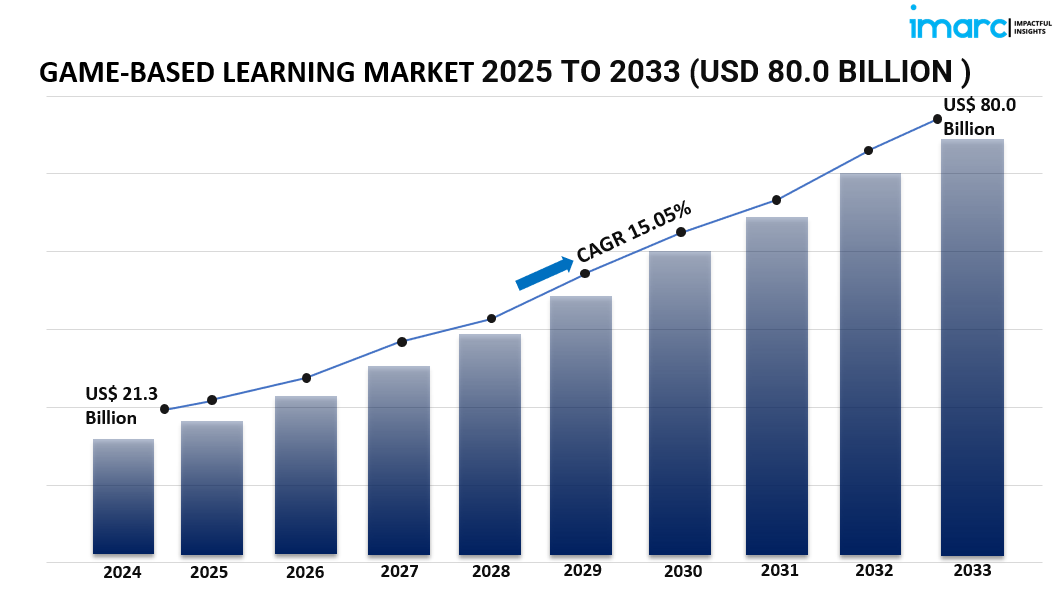
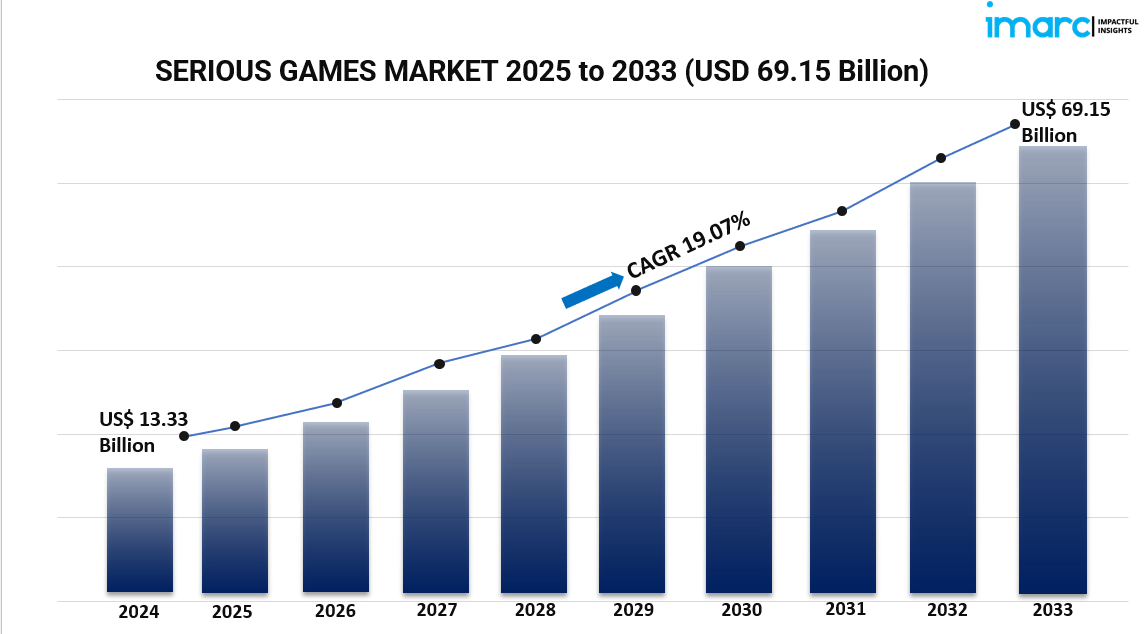
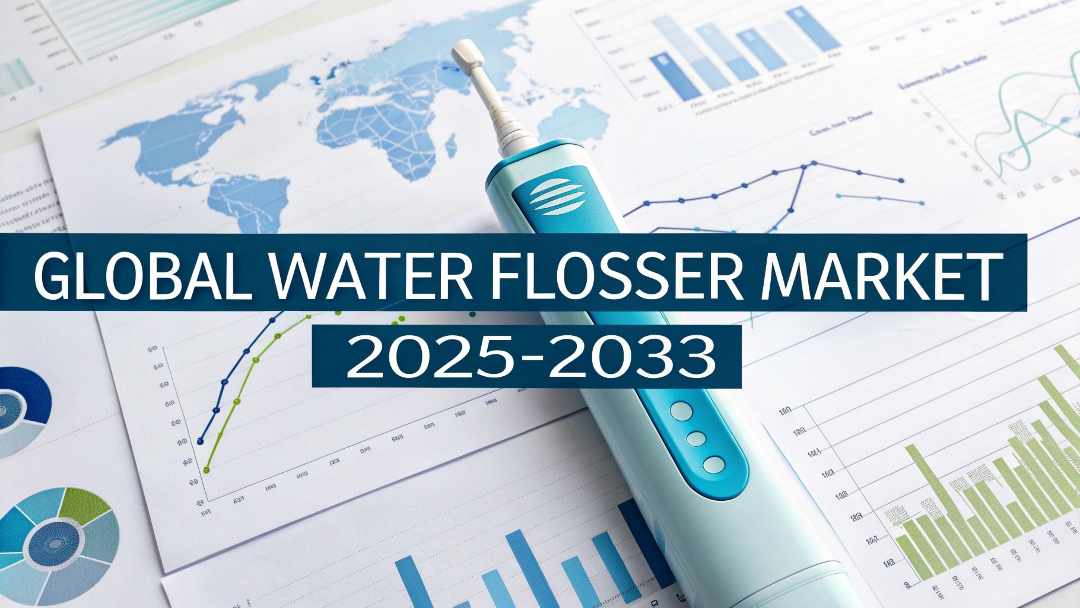
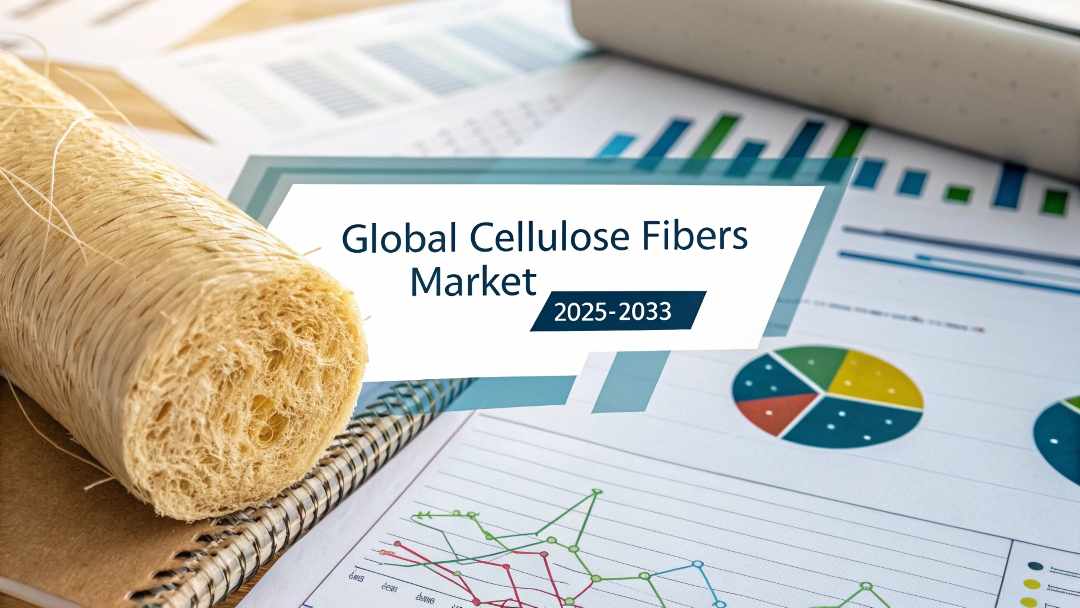
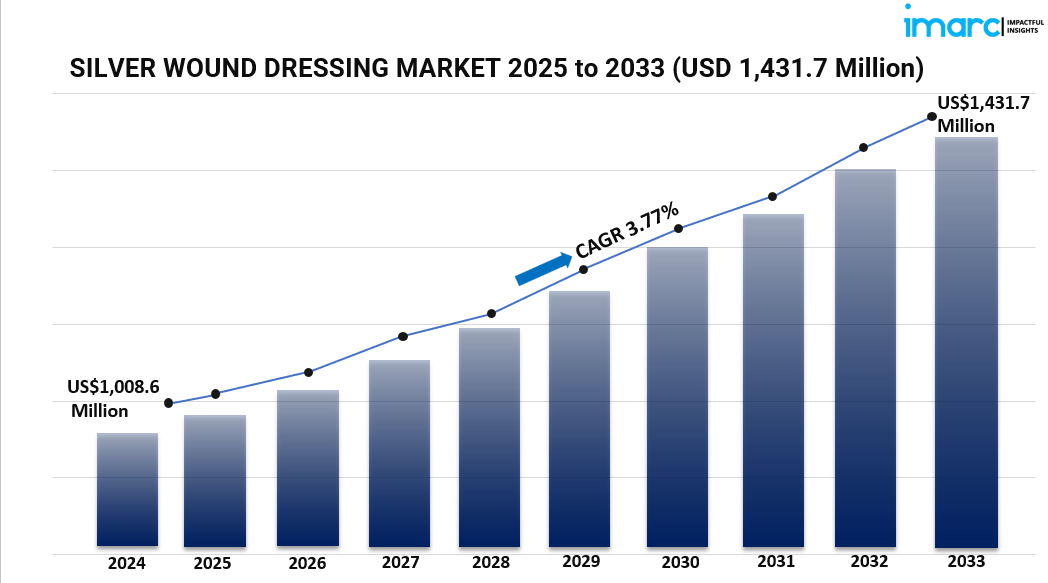

.jpg)



.jpg)
.jpg)

Write a comment ...